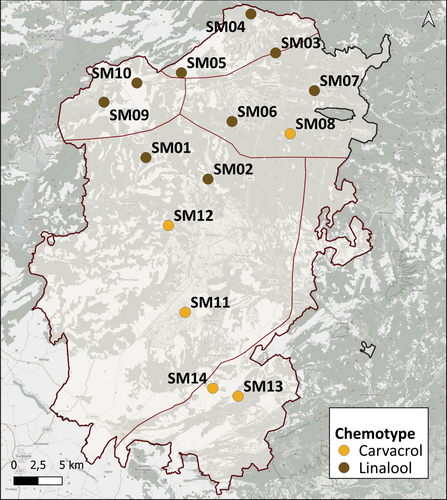Research article
Chemical composition of wild populations of Thymus vulgaris and Satureja montana in central Catalonia, Spain
Sira Capdevila (sira.capdevila@ctfc.ca), Dolors Grau, Roser Cristóbal, Eva Moré, Xavier de les Heras
21 March 2025 –
https://doi.org/10.1002/jsf2.70005
Abstract
Background
This study is devoted to determining the chemical composition of essential oils obtained from 13 wild populations of thyme (Thymus vulgaris L.) and 14 populations of winter savory (Satureja montana L.) from the Solsonès region of Catalonia, Spain. The essential oils were obtained by hydrodistillation using a Clevenger apparatus, and the volatile compounds were identified by gas chromatography coupled with mass spectrometry.
Results
Twenty-six compounds were detected in the thyme samples, including linalool, (Z)-sabinene hydrate, terpinen-4-ol, and α-terpenyl acetate. In contrast, 19 compounds were identified in the winter savory samples, with linalool, carvacrol, ρ-cymene, and γ-terpinene as the major components. The results facilitated comparative analyses among samples, enabling the assessment of differences related to geographical location and growing conditions. Significant variability in the chemical profile of thyme and winter savory samples was observed, underscoring the influence of several factors. Notably, the observed increase in linalool content in the northwestern areas of the region, evident in both winter savory and thyme, is attributed to a discernible position or climatic division effect. For instance, in winter savory samples, linalool content ranged from 3.9% in southern populations to as high as 75.8% in certain northern populations. Similarly, in thyme, linalool content varied significantly, reaching up to 36.7% in some northern samples compared to lower values observed in southern samples, such as 9.6%.
Conclusion
This information holds significance for the selection of populations suitable for prospective applications in the pharmaceutical, cosmetic, and gastronomic industries.
